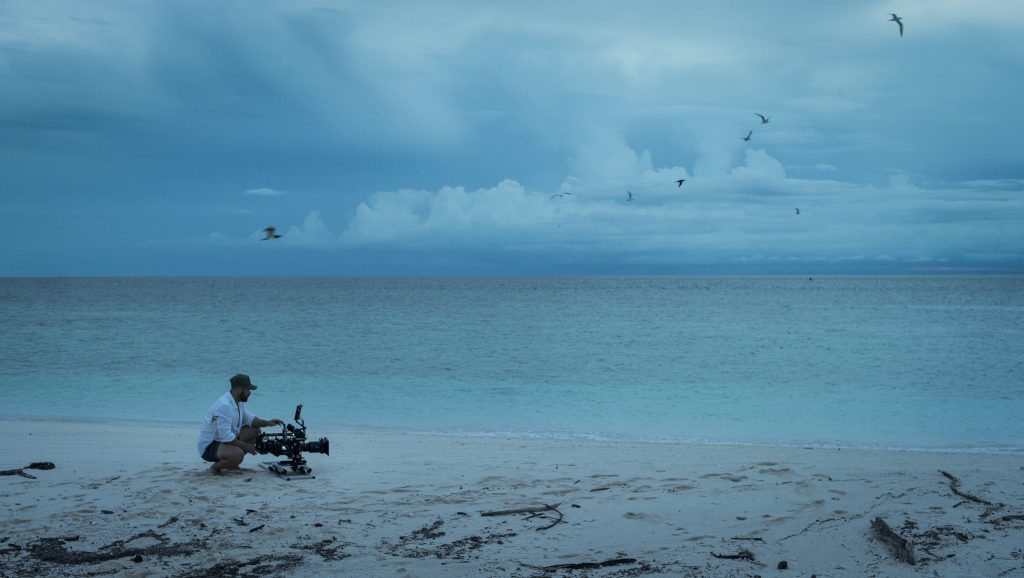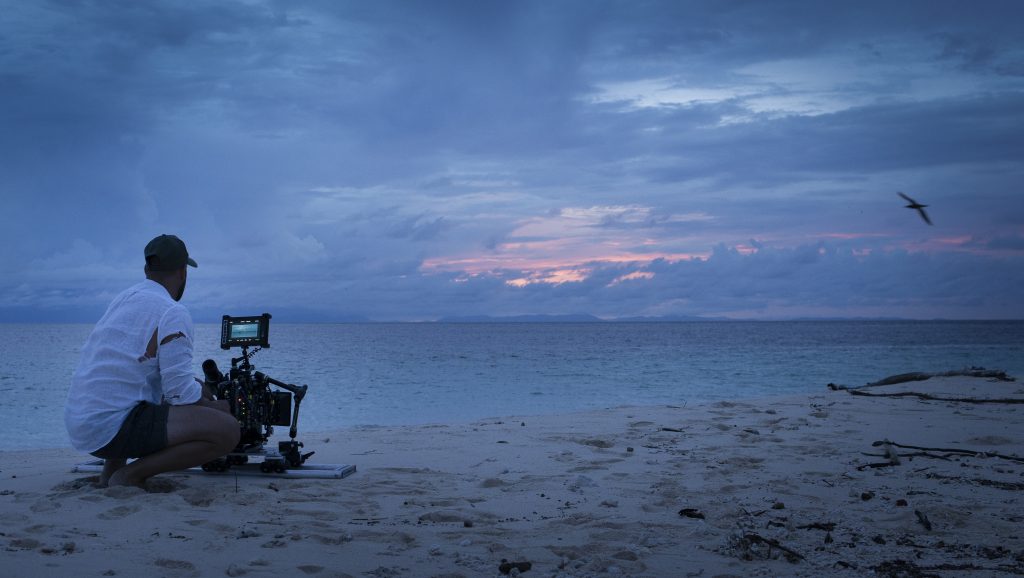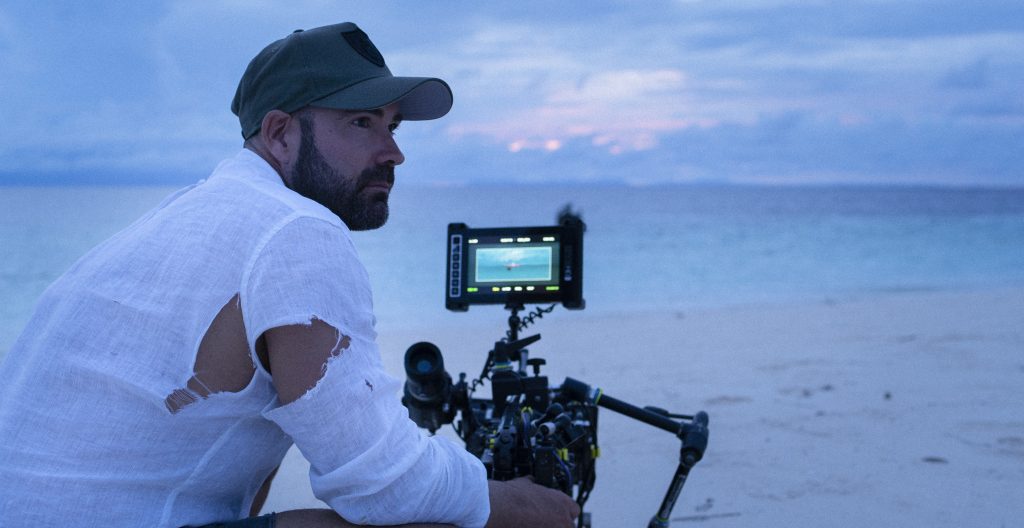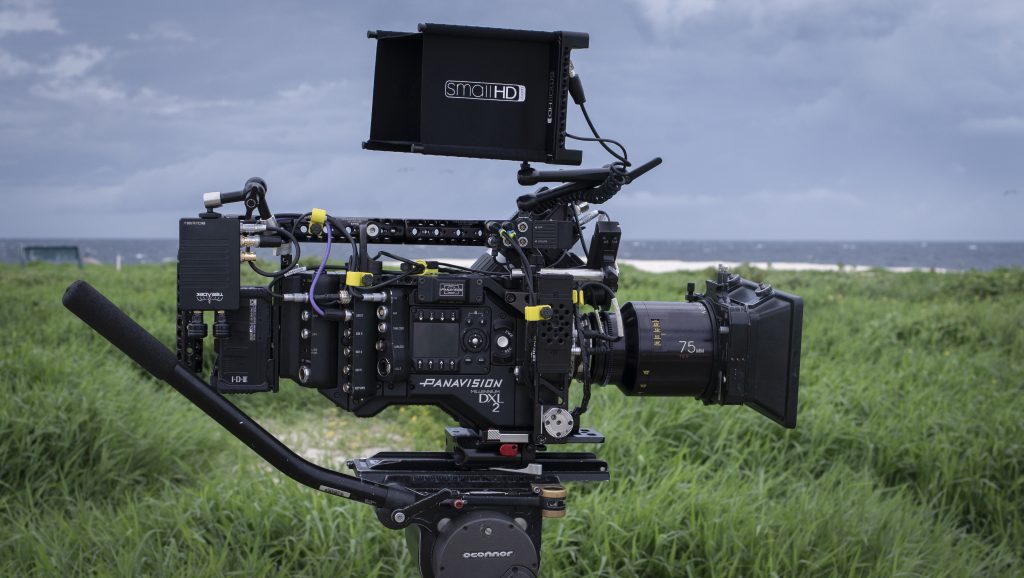INTO THE WILD
When the BBC first approached Dale Bremner ACS to shoot an episode of Our Universe, he was caught off-guard by their desire to shoot the ground-breaking hybrid nature series with a 2x anamorphic squeeze. The DP reflects on the challenges of filming in the precious surrounds of the Great Barrier Reef – including a nocturnal commute through shark-infested waters!
Narrated by Morgan Freeman, and remotely directed by London-based Stephen Cooter, the BBC hybrid series Our Universe is a Netflix original and the first of its kind. My episode, “Elemental”, follows the life cycle of the sea turtle and its connection to raw elements of the universe.

The shoot was broken down into two blocks – based on the activity of the turtles laying and hatching eggs – and shot on the northern rim of the Great Barrier Reef. 1st AC Chris Braga and I joined the crew of the scientific research vessel ARGO, along with local Indigenous custodians, a parks and wildlife representative, and marine biologist and renowned underwater cinematographer Richard Fitzpatrick ACS. Our crew had to be small and nimble, with only limited permits available. We had to be very sensitive to the struggling marine ecosystem.
We had scheduled seven days to capture the delicate hatching process. However, nature had other plans. Three days in, our shoot was cut short as we were hit by a tropical cyclone. Blessed with incredibly dramatic skies, and cursed with unpredictably violent weather, we were forced to abandon the shoot and island-hop back down the coastline to Cairns. Thankfully, we had shot enough coverage in the two days to scrape through. The 2nd block, the laying process, was shot over 2.5 weeks cyclone-free.

We needed to meet Netflix’s delivery requirements; a minimum of true 4K delivery, on a 2x anamorphic squeeze. Given both the environmental and physical constraints, I knew multiple setups of both camera and lens combinations would be required to successfully achieve this.
Some key technical hurdles that present themselves when shooting anamorphically are; vertical and horizontal resolution loss, horizon barrel distortion, smaller aperture range, inconsistent weight and front element dimensions, undesirable lens breathing, and a lack of minimal focus lengths.
From a technical standpoint, these challenges were amplified when working in endangered, fragile and exposed conditions.

What’s more, the turtles’ activities were predominantly nocturnal and on the fringe of low light. Add extreme humidity, fine sand, a passing tropical cyclone, and an endangered bird sanctuary surrounding us, and the variables were multiplied. Let’s not forget the nocturnal commute with equipment in shallow, shark-infested waters.
Considering all these factors, I needed a base set of anamorphics that held up in low light, with minimal distortion, a uniformed casing, a realistic minimal focus range and a balanced visual consistency. Personally, I find when shooting the ocean’s horizon line, any skew feels amplified, so any deep distortion needs to be minimised as well.

Panavision’s G series anamorphics ticked these boxes perfectly. I combined them with the Sony Venice for its resolution, high ISO capabilities, and internal NDs for the majority of the on-land sequences.
When the G series were pushed beyond their limits in terms of low light and minimum focus, I supplemented them with Panavision Primo sphericals to match the G series aesthetically. A Panavision super macro 90mm was also used to capture hero shots of our baby turtles emerging for their first time, as dioptres can both distort and amplify resolution loss.
Sky VFX plates were captured at all times of blue hour and sunrise, at multiple exposure and aperture levels. This was to ensure post house Lux Aeterna was given enough latitude in the shots with connecting plates of the sky and ocean, and our narrative VO that links the two. Transitions of different speeds and focal lengths were also shot to ensure the narrative pacing between our VFX world and the reef was consistent. Both colour and distortion charts were shot and offered up in pre-production to aid future integration of the VFX shots.

The turtles were extremely sensitive to any artificial light and noise, so much of our egg-laying sequences were shot purely in moonlight. An extremely close proximity was also required. To ensure we had enough detail in moonlight, with minimal disturbance, we combined a Sony A7 III with Cooke S4 primes when possible. A heavily diffused Ice light and silver bounce was also gently introduced during some of these delicate scenes.
Guy Alexander, Ewan Donnachie and Jason Price from Heliguy joined us on the last leg of the 2nd block for some sensational aerials. I had previously discussed with Ewan the best build and combination to match the on-land sequences.
Due to their size and weight, we combined P+S Technik Kowa anamorphics from CameraHire with a RED Komodo on a Matrice 600, and they performed perfectly. I had a backup set of vintage Zeiss Super Speeds for the lower-light flights but the Komodo held up to my satisfaction, even when pushed.

Many characteristics of the vintage anamorphics were reduced when foreground was not introduced, and only the distortion of the ocean’s horizon was a concerning factor. The Kowas were also never shot wide open, ensuring some optical consistency was retained while minimising the edge fringing – synonymous with the vintage Russian glass.
The underwater sequences were predominantly captured by Richard, on a RED Helium, in custom Gates and Nauticam housings. We combined these with our Cooke S4 primes, in a rectilinear dome, for some breathtaking sequences. Diving and swimming the reef amongst thousands of great sea turtles, in shark-infested waters, remains a unique experience I will forever be grateful to experience.
Combining such a large combination of camera bodies and lenses was a little daunting from an aesthetic perspective, and but seeing the result and outstanding post work reassured me that the right choices were made to bring this incredible, fragile story to the screen. Having Morgan Freeman’s voice to tie it all together was the cherry on top.



















